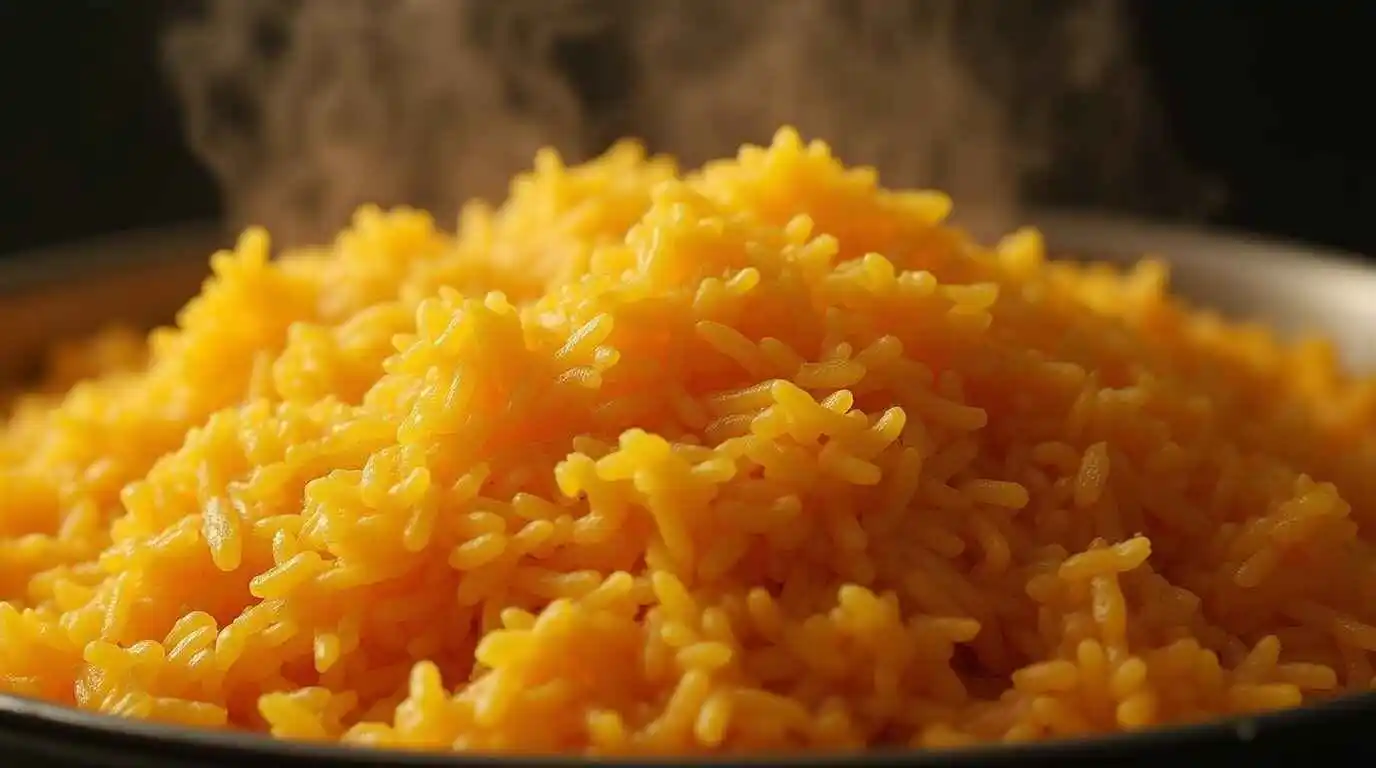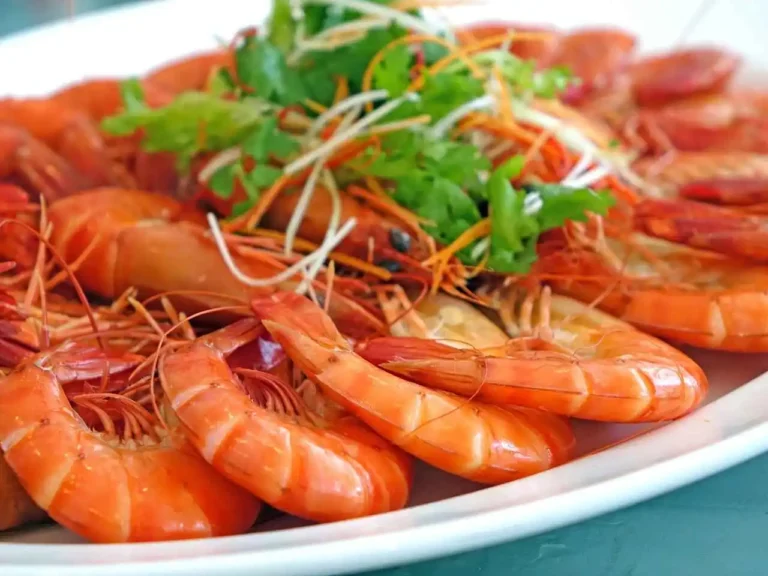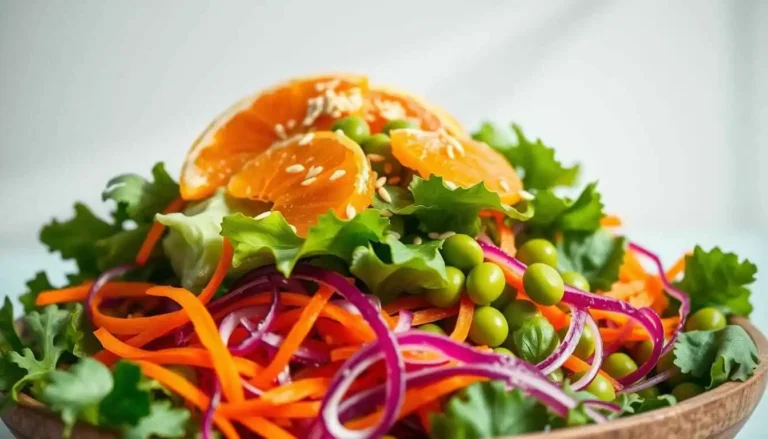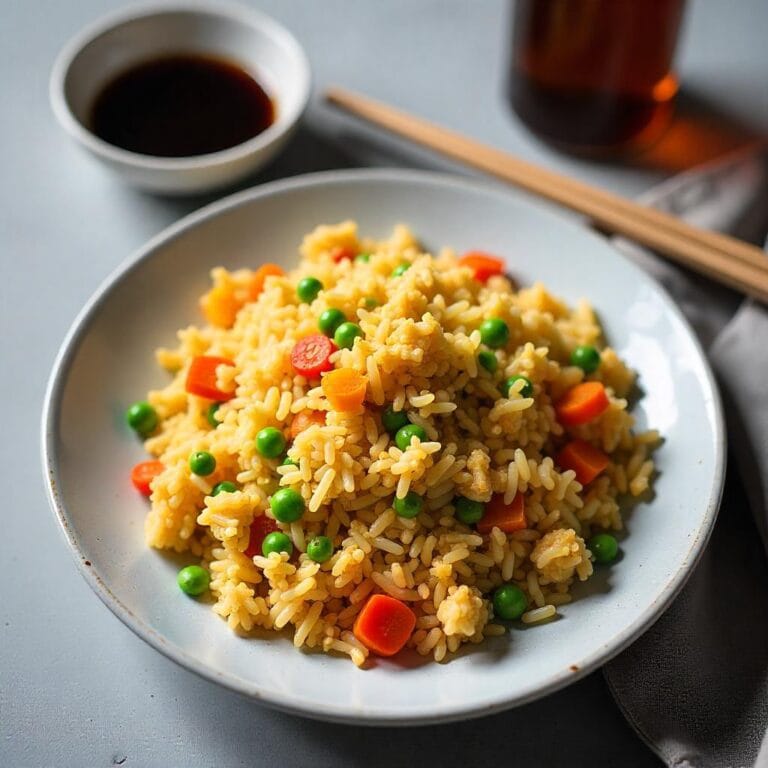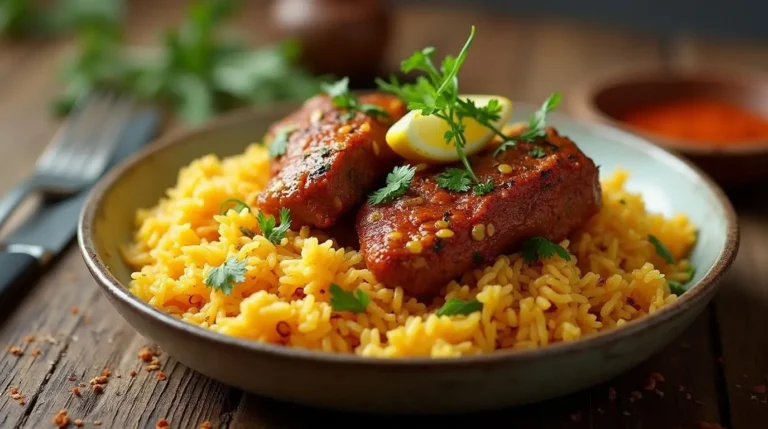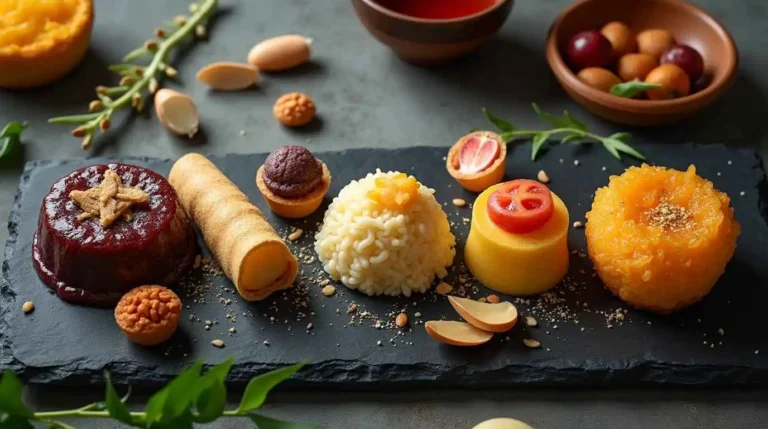Tasty Persian Recipes: Delicious Dishes All Year Round
Imagine being able to take a bite and be instantly transported to the busy bazaars and sun-drenched gardens of Iran? Persian food is a harmony of tastes- the aromatic saffron, tangy barberries, rich pomegranate, and melt-in-the-mouth meats, which transform an ordinary meal into a celebration of food.
Looking to find a comforting stew to warm up a rainy day or a colorful rice dish to wow your guests, these tasty Persian recipes are sure to have something memorable to offer any time you need it. Shall we have a gastronomic journey, and each spoonful of the dish is a paragraph of a story, and each ingredient is a spark of delight?
Table of Contents
Saffron Rice to Tahdig Perfection
The key to Persian tahdig is to figure out that golden crust, crispy on the exterior and soft in the center, is the crown jewels of any Persian spread. The fans are aware that saffron is not merely a spice; it makes Persian rice vividly colored and slightly fragrant, carrying every bite away.
To get your rice just fluffy and fragrant, several vital secrets, such as the necessity to rinse grains until the water runs clear and to enable the soft steam to do its job, are to be kept in mind. So, whether you are mixing it up or keeping with the tradition, serving a platter of saffron-scented rice with a dramatic tahdig top will impress your guests and make the dining experience unforgettable.
Tips for attaining perfection in fluffy Persian rice
The key to the perfect Persian rice is a good rinse – this will remove the extra starch and ensure that the grains will not be sticky but will remain separate. Then, absorbing the rice in salted water not only adds flavor to each grain but also helps to cook up light and fluffy.
And finally, wrapping a towel around the lid may sound strange when it is time to steam, but this old timer method captures the perfect amount of moisture and helps the rice to fluff apart beautifully. Last but not least, allowing the cooked rice a couple of minutes of rest before serving it makes it reach its full fluffy potential, which is crucial to that cloudlike Persian consistency.
The key to the golden crispy tahdig
The foundation of a fluffy, separated base, which is an indispensable initial step to making show-stopping tahdig, is establishing a reasonable basis by choosing long-grain Persian rice and rinsing it well. A mixing of creamy yogurt with fragrant saffron and a dash of oil forms a rich mixture that, when spread on the bottom of the pot, assures that trademark golden crust.
To achieve the crunch, it is essential to start the cooking process under medium-high heat and then to steam under low flame, covering the pot with a towel-wrapped lid to allow the gentle steam to do its thing. Once the rice is cooked, resting it and then inverting it means that the tahdig will be beautifully crisp and intact, perfect to impress at any party.
Warming Khoresh Stews
Khoresh stews are rich and slowly cooked, and therefore epitomize the essence of Persian food, where tender chunks of meat are combined with fresh vegetables and a melody of fragrant spices.
- Khoresh-e Fesenjan is a stewed meat with tart pomegranate and walnut sauce
- Ghormeh Sabzi – herb-filled stew
- Khoresh Bademjan – comforting eggplant-studded stew
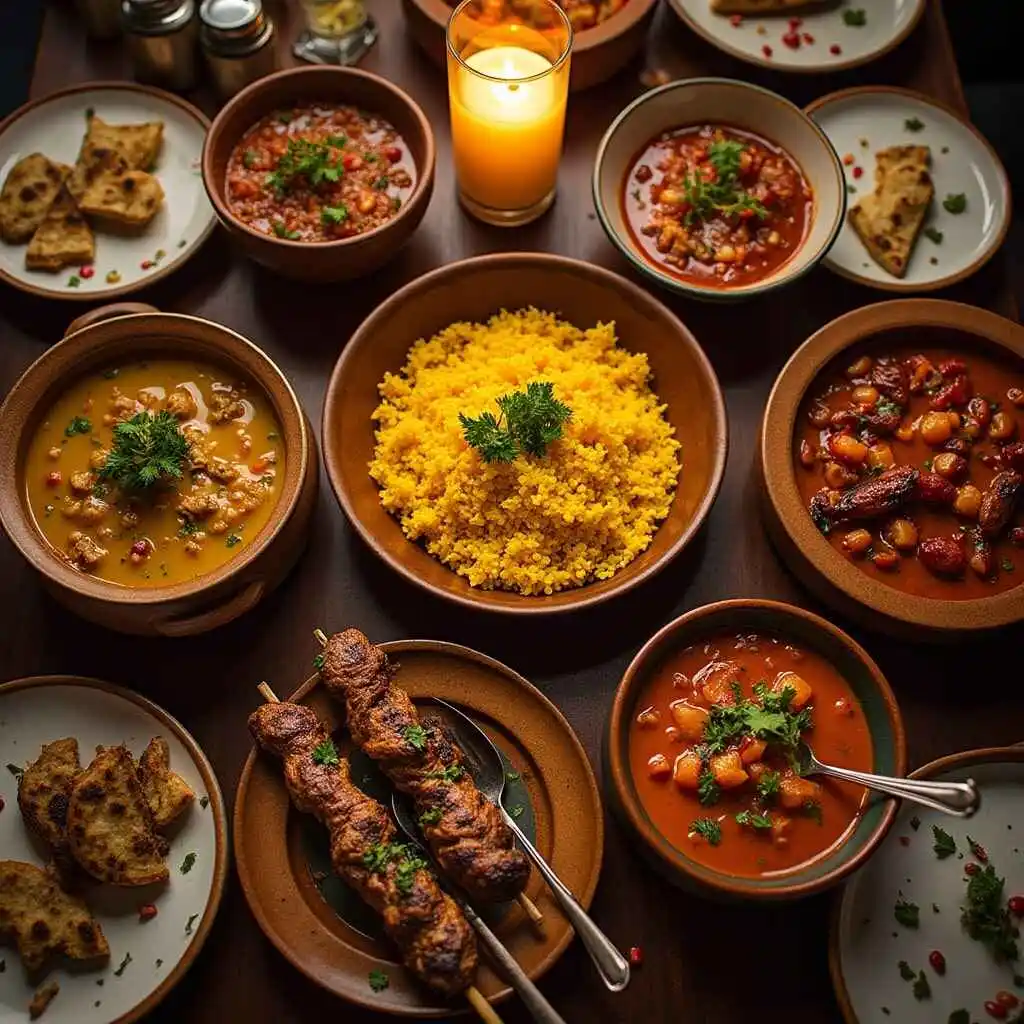
These dishes provide a flavor jolt with each spoonful. Generous helpings of these stews are usually poured over saffron-scented fluffy rice that turns ordinary family get-togethers into celebrations. Straddling the line between tangy, sweet, and savory, khoresh stews are the kind of dishes that warm the heart and fill the need at any time of the year, so that each spoonful becomes as unforgettable as the events they are served with.
Traditional khoresh dishes such as Fesenjan and Ghormeh Sabzi
Ghormeh Sabzi is a beloved Persian stew in which a mixture of fresh herbs, juicy lamb, kidney beans, and dried limes combine to create a highly fragrant meal. At the same time, Fesenjan is a sweet dish with an exquisite combination of ground walnuts and sour pomegranate molasses, which usually covers tender chicken or duck with a thick, shiny sauce.
Both of these traditional khoresh recipes highlight the assertive flavors of Persian spices; think earthy turmeric, warm cinnamon, and delicate saffron, each of which adds depth and personality to each bite. A meal of khoresh would not be complete without a large helping of Persian saffron rice, which helps mop up the complicated sauces and binds the whole eating experience together in a very Persian way.
Slow-cooking and spice balancing tips
Creating deep, memorable flavors in Persian khoresh stews starts with layering spices carefully during the slow-cooking time. When you add whole spices, such as cinnamon sticks or cardamom pods, at the beginning of the cooking process, you welcome richer fragrances and a certain mild complexity that permeates the whole dish.
Ground spices are added later, to make sure that their freshness and boldness are not wasted during hours of simmering. It is also essential to monitor the liquid, because slow-cooking may tone down the spices, and occasionally may require a small top-up or a light adjustment of the seasoning.
It tastes as you go along, and adjust the seasoning a pinch at a time, to balance the flavors. As the stew cooks along, those spices will continue to develop and deepen, ensuring that your dish will be as bright at the final spoonful as it is at the first.

Kebabs on Fire: Grilled Flavours of Iran
And perhaps there is no cooking experience quite like the sizzle and smell of Persian kebabs cooking over an open fire. A single bite of koobideh or joojeh kebab is enough to unveil the secrets of artistic marination and spices that characterize the Iranian legend of grilled meats.
In addition to the skewers, charred tomatoes, aromatic saffron rice, and mounds of fresh herbs make the dish more than a feast to the senses and the soul. Whether it be walking by a busy street kebab chef or sitting with family and friends around a backyard grill, the social experience of grilling kebabs is a time-honored tradition that unites people and showcases the bright flavors at the center of Persian cuisine.
Marinades with authentic Persian flavours
Persian kebabs are marinated in yogurt-based marinades that are enriched with saffron, garlic, and lemon juice, which makes them tender and gives them a tangy hue. To make it decadent, a drizzle of pomegranate molasses, crushed walnuts, and warming spices makes a sweet-tart coating that is delicious on poultry or even dense vegetables.
Before cooking fish or lamb, a slight drizzle of olive oil combined with sumac, dried lime, and fresh herbs adds a zesty, aromatic quality to the meat and makes your grill take on a vibrant Persian personality. And if someone prefers a hint of light sweetness, then a mixture of rose water, cinnamon, and honey will provide light floral notes and will turn any grilling session into an experience never forgotten.
Grilling methods of juicy koobideh and juicy joojeh kebab
To make juicy koobideh, ground lamb and beef are mixed with grated onion and only a pinch of spice, and finally, the mixture is kneaded until it is sticky and holds together. Moist hands help form the mixture around flat metal skewers and cause the kebabs to keep their shape and not stick on the grill.
This is important: high, direct heat; this will help render the koobideh often, as this will trap in the juices and create a tasty crust. At the same time, joojeh kebab requires chicken that is marinated in a blend of yogurt, saffron, lemon juice, and onions several hours before grilling, imbuing every bite with tenderness and bright taste.
Cooking joojeh on medium heat and basting it often with melted butter or oil helps keep the chicken juicy, and turning it frequently ensures that the chicken gets an even, beautiful golden color that is as attractive to the eye as it is to the palate.
Persian Delights in Vegetarian Cuisine
Vegetarian Persian food is overflowing with fresh herbs, legumes, and a rainbow of fragrant spices, and shows that meat-free meals can be satisfying and wholesome. The traditional recipes, such as Kuku Sabzi, a colorful herb frittata, and Kashk-e Bademjan, an eggplant dip blended with sharp whey, demonstrate how the depth of flavors is constructed starting with the basics.
Persian cooks are not afraid of ingredient innovation, turning the usually humble eggplant, lentils, and even pomegranate into creative, drool-worthy mains and sides. And if you need something more colorful and want to eat a rainbow, Sabzi Polo, herbed rice, with plenty of fresh green vegetables in it, will provide a vibrant, yet fulfilling meal that will sing praises of the vegetable kingdom.
Vegan reimagination of classic dishes
The world of plant-based Persian cooking is limitlessly creative, and you can hardly go wrong trying to find the spirit of the classic dishes and making them available to all people. Take vegan ghormeh sabzi, which uses mushrooms and kidney beans in place of the meat, producing a stew that is still filling and faithful to its herbaceous origins.
As a refreshing accompaniment to replace dairy yogurt in mast-o khiar, coconut or soy-based yogurts can be used to maintain the same creamy consistency and tangy taste, without using animal products. And, in the case of the grill, a koobideh kebab made with lentils, walnuts, and cozy spices comes out unexpectedly delicious, remaining intact and pretty on the open fire.
Even fesenjan can be easily adapted–roasted vegetables or tofu can be cooked in that classic pomegranate and walnut sauce, and each bite will be rich, tangy, and satisfying.
The place of fresh vegetables, herbs, and legumes
Persian herbs, like parsley, mint, and dill, are not merely used to pretty up a plate in Persian cuisine; they add a garden-fresh aroma to all dishes that is difficult to resist. The legume, such as lentils, chickpeas, and beans, replaces the rich protein sources, providing classic stews and soups with the needed richness and hearty bite.
Meanwhile, fresh vegetables, like eggplant, spinach, and tomatoes, add a pop of color and a healthy vivacity to the table, making every meal as nutritious as it is delicious. It is not only traditional to find the right balance among the herbs, legumes, and fresh products, but also the key to rich textures and brave flavors, which Persian cooking is so famous and popular for.
Sweet Treats: Desserts to Rosewater to Pistachios
Enter the magic land of Persian desserts, where each bite is flavoured with rosewater and a pinch of saffron, making delicately floral flavours that linger on the tongue. Indulgence comes in the form of traditional baklava, layers of crispy pastry, honey, a nd a good handful of pistachio nuts, making it a favourite centrepiece in celebratory Persian spreads.
Persian sweets are also marked by creamy fereni pudding and chewy gaz noug, wherein nuts and fragrant spices are mixed to create an unmatched texture and flavor. In every treat, you will find a virtuoso touch of sweetness and perfume, a feature that makes the Persian desserts irresistibly unique and unforgettable.
Preparing traditional desserts such as baklava and saffron ice cream
Traditional Persian desserts like baklava are a sensual feast of crispy layers of phyllo dough, finely chopped nuts, and a touch of sweet syrup scented with rose water or orange blossom. Baklava is a love affair at home: every crisp sheet of dough is flavored with melted butter, layered liberally with nuts, and baked until golden.
In the meantime, saffron ice cream, “bastani sonnati,” is another sort of magic. Flavoring the custard base with actual saffron threads and rosewater, and stirring in toasted pistachios, this dessert has a gorgeous color in addition to a floral taste that is distinctly Persian. These two desserts scream Persian hospitality, so get ready to enjoy every single bite that is filled with flavor and aroma.
Matching desserts with Persian tea ceremonies
Iranian tea ceremonies will allow you to enjoy every cup of tea with a variety of carefully chosen desserts. A piece of syrupy baklava or a crisp flake of zoolbia is a perfect accord with the intense, tannic flavours of freshly brewed Persian tea.

When sholeh zard, perfumed with saffron, is served on the table, the flowery smell of it harmonises with the delicate complications of the tea itself. A few dried fruits and crunchy nuts will provide a satisfying contrast, in both flavors and textures, and rosewater-scented nan-e nokhodchi cookies will bring out and emphasize the natural floral notes of the tea.
These combinations turn a plain cup of tea into a ritual, hailing the richness and the beauty of Persian culinary art.
Feasts and Daily Delights
Full of a vibrant range of flavors, Persian recipes are as appropriate on a rich festive table as they are on a warm home dinner. Authentic Persian banquets amaze the guests with the fragrant saffron rice, succulent pieces of meat, and vibrant slow-simmered stews- all of which testify to the unbelievable diversity of the cuisine.
On less busy nights, there are simple staples such as kuku sabzi, which is full of fresh herbs, or the filling ash reshteh noodle soup that will bring comfort and happiness with each bite. Other famous products like saffron, dried fruits, and plenty of herbs easily transform any festive feast or a simple family dinner into an extraordinary one.
Recipes to make on Nowruz, at weddings, and family get-togethers
Vividly flavored with a mix of fresh herbs and light rice pilaf served with golden and tender fish, Sabzi Polo ba Mahi ushers in the Nowruz and conveys the hopes of renewal to each of the tables. Fesenjan, on its part, dazzles wedding banquets and holiday parties with its rich pomegranate and walnut sauce that enshrouds chicken or duck in a sweet-tart hug that is both surprising and memorable.
Regarding family gatherings, the theatrical presentation of Tahchin, a saffron rice cake stuffed with juicy chicken or lamb, is sure to cause some admiring looks and hungry waiting. Khoresht-e Gheimeh, cooked with split peas, chunky meat, and the zest of dried limes, completes the feast as a hearty, comforting stew that makes everyone come closer and enjoy the pleasures of good food and good company.
Weeknight quick meals that do not compromise on authenticity
On hectic weekdays, you might not want to sacrifice the bright flavors of Persian food, either: kuku sabzi or tahchin can both be ready in less than an hour, and are still full of the bright herbs and spices that make them classic. With a fstapleled ingredients like saffron, dried limes, and tart barberries witharm’sarm reach in the pantry, you would easily add that distinct Persian flair to your fast dinners.
When it comes to the traditional dishes, such as zereshk polo or joojeh kabab, shortcuts such as pre-cooked rice or rotisserie chicken can rescue the situation, allowing one to save time without losing authenticity. It could not be easier to complete your spread by preparing a refreshing Shirazi salad or a chilling bowl of mast-o-khiar, making your Persian feast both practical and traditional at the same time.
Conclusion
Persian food is a lustrous carpet of culture, craft, and audacious ingredients that can turn any party into a feast–or otherwise make a silent evening at home seem somewhat enchanted. Whether it is the irresistible crunch of well-made tahdig or the home charm of khoresh stews, all the dishes are odes to the richness and the variety of the Iranian culinary tradition.
Once you turn on the grill to prepare some juicy kebabs, get creative with vegetarian delights filled with fresh herbs and legumes, or enjoy rosewater-scented sweets alongside a hot cup of tea, Persian recipes will open a whole new world of sensory pleasure. That is why at aTaa Takikie awe arere are that all the meals, whether it is a celebratory Nowruz spread or a weekday dinner, should be prepared with the same attention, imagination, and a pinch of saffron that make the Persian food memorable.
What is so beautiful about those dishes is not only the tastes they present, but the stories and the traditions those dishes hold, calling both the cooks and the guests to enjoy the time and to be a part of something unique. Therefore, regardless of whether you are an experienced home cook or you are only starting to discover Persian cuisine, enjoy the process.
Find new ingredients, invite friends and family, and make a point of sharing the experience of transforming ordinary ingredients into remarkable experiences. Each aromatic spoonful, each crispy golden bite will have you continuing a yummy legacy- one divinely delicious meal at a time.
Tried This Recipe? Tell Us What You Think!
There are no reviews yet. Be the first one to write one.

